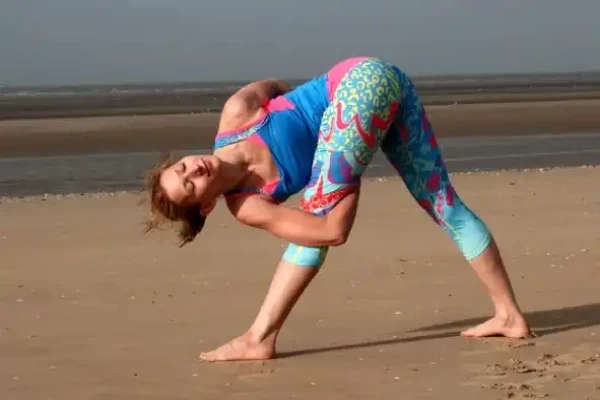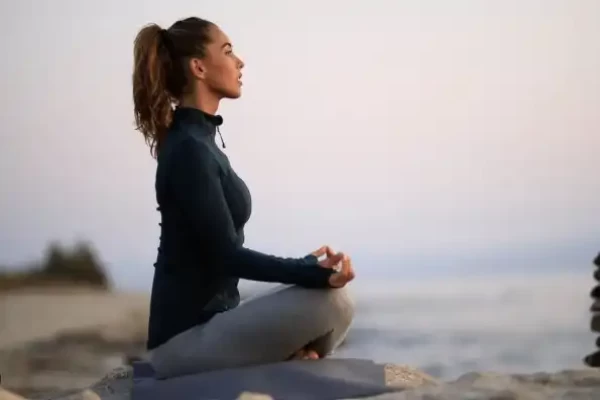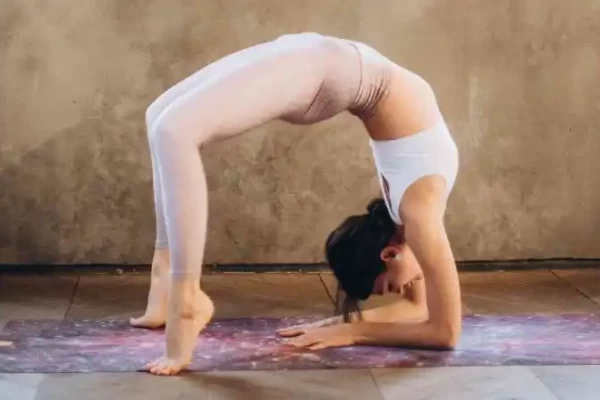 Welcome
Welcome
“May all be happy, may all be healed, may all be at peace and may no one ever suffer."
The nerve-muscles of the hands and feet become particularly strong in this asana practice. That's why it's called Padahastasana. Stand straight with the hands parallel to the thighs and gaze straight ahead. The ankles will be joined together, but there will be a gap between the two big toes.
Then keep the left hand straight and gradually lift it up and align the elbow with the head. When the hand is next to the head, keep bending the head along the Dakshina Skandha with the raised hand as much as possible. The legs won't move a bit, the knees won't break a bit. The right hand will remain straight and with the bowing of the head, it will come down to Jangha Pradesh. Bend your head as far as you can and stay in this position for a few seconds. Keep your hands straight and lift your head slowly and stand straight. While remaining in such a standing position, gradually lower the raised left hand and bring it parallel to the left thigh. Practice the action again, this time in reverse, i.e. raise the right hand instead of the left hand. Align the elbow of the right hand with the head and bend the head along the left wrist with that hand. The knees will not bend and while bowing the head, the left hand will also come down towards Junghapradesh. Bend down as far as you can without breaking your knees and stay in the asana for a few seconds; Again slowly stand upright. Now extend the hands forward along the skandha and gradually lift them up and take them behind the head as much as possible. Needless to say, the entire arm including the wrist should be straight, no folds in the elbow area. Then bring the extended hands of the back forward and gradually bend down and touch the toes of both feet with both hands. The knees should also be kept straight while touching the feet with the hands. Do not bend the knees. If able, the forehead should be attached to the knee, if not, there is no harm. Remaining in the asana for a few seconds, raise the arms up and stand straight and bring the raised arms down.
A complete padahastasana is made up of these four types of bowing alternately to the south, left, front and back. This action can be done starting from 2 times and going up to 5/7 times.
If it is difficult to touch the first foot first, lower the hand as far as the hand goes and complete the action. When it becomes easy to touch the pada with repeated practice, practice the action with the breath. Inhale while raising the hand and exhale while lowering the hand. In this way, you can get more benefits from this asana if you can do it with the rhythm of breathing
goes
Generic for Diseases
Generic Indications
- Impotence
- Shortness of the body
- Anemia
- Constipation
- Indigestion (Acidic)
- Sciatica
- Fat gain or obesity
- Kidney failure
Complement Generics
Similar Generics
Inimical Generics
Component
Yoga Indications
Dosage Administration
Contraindication
Side Effect
Precaution Warning
Patients with high blood pressure and heart patients should not practice this asana.
Padahastasana

Urdhva Dhanurasana

Parivrtta Baddha Trikonasana

Gorakshasana

Garbhasana

Uttanapadasana (Variant)

Kapotasana

Ujjayi Pranayama

Chakrasana
Padahastasana, পদহস্তাসন
To be happy, beautiful, healthy, wealthy, hale and long-lived stay with DM3S.
